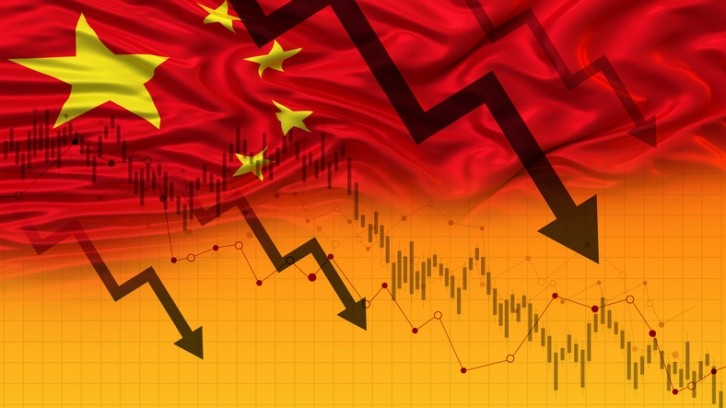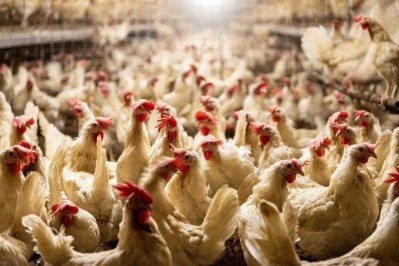How can China sustain growth amid economic headwinds?

Amidst these challenges, opportunities for growth remain abundant, albeit within a complex economic narrative.
Recently, insights into China's macroeconomic situation were provided by Tao Wang, the author of the Financial Times Best Economics Books 2023, former IMF economist, and long-serving chief China economist at a major global investment bank during a webinar run by Kemiex.
“The easy growth era is over and there is greater need to innovate,” she notes.
Over the past two and a half decades, China has rapidly emerged as a key producer and exporter of vital raw materials such as vitamins. A staggering 70% of the world's supply of vitamins and amino acids originates from China. It is also a major consumer of both domestic and foreign raw materials and finished products.
China's status as the largest feed producing and consuming market globally underscores the immediate impact any changes in its animal nutrition or protein sectors could have on world markets.
Downturn
The current economic landscape in China is marred by several unprecedented challenges, including a troubled real estate sector, excessive industrial capacity, and rising manufacturing costs.
Purchasing manager indexes (PMIs) and industrial profits depict a sobering picture, particularly affecting the profitability of the chemical, pharmaceutical, and nutritional sectors. This downturn follows a boom phase during the Covid-19 pandemic in 2021.
Dispelling misconceptions
Dispelling common misconceptions about China's economic dynamics, Wang highlights the decentralized nature of policymaking, emphasizing the autonomy wielded by local governments. Contrary to widely held belief, China's economic ascent has been fueled not solely by state control but by strategic adaptations to market forces, beginning with reforms in the early 1980s.
“In China, local governments are especially important and have a quite some autonomy when it comes to policy implementation; their interests are not always aligned with the central government. As a large economy, it is fiscally decentralized as well, which results in a lot of power residing with local governments.”
There is also the misconception, especially over the past 20 years, that it was only because of China joining the World Trade Organization (WTO) that its economy took off. “But China grew rapidly for 20 years before it joined WTO and did a lot of opening and reform to qualify as a member of the WTO including slashing import tariff rates,” explains Wang.
Existing structural issues
Structural issues pose significant challenges to sustained growth.
China grapples with significant challenges stemming from its property sector, historically a cornerstone of economic growth. The bursting of the property bubble remains a formidable obstacle, contributing to the current economic fragility.
Compounding this issue is China's burgeoning debt, notably at the local government level, which stands at approximately 300% of GDP. This staggering debt burden, coupled with cash flow constraints, presents a formidable hurdle to sustainable economic stability, highlights Wang.
Moreover, pronounced income inequality persists, particularly evident in the gaping urban-rural divide. The economic structure reflects imbalance, with growth primarily propelled by investment, while domestic consumption lags behind, resulting in overreliance on exports. Despite efforts to bolster domestic demand, progress has been sluggish, she stresses.
New headwinds
China also confronts mounting headwinds as its working-age population has been dwindling since 2011, with that development compounded by an unexpectedly sharp decline in fertility rates, she notes.
These demographic shifts signal the end of an era characterized by effortless growth, necessitating a renewed focus on innovation to drive sustainable development, she says.
But China grapples with constraints imposed by advanced economies like the US in terms of access to critical technologies, and this issue poses formidable challenges to its technological advancement and economic competitiveness, reports the economist.
Moreover, the International Monetary Fund (IMF) identifies a phenomenon of "geoeconomic fragmentation and decoupling, with numerous countries seeking to diversify away from China's supply chain and market," emphasizes Wang.
Addressing these systemic issues is paramount to fortifying China's economic resilience and fostering inclusive growth, she believes.
How can China sustain growth?
Despite these headwinds, China remains poised for growth, remarks the expert.
Its continued expansion strategy relies on leveraging surplus rural labor, extending retirement age, and boosting productivity, says Wang.
Despite lower GDP per capita compared to the US, China has room for advancement, especially in modernizing industries and embracing sustainability. Investment in R&D, robotics, and automation supports this trajectory, she adds.
While wage increases and rising production costs may impact certain sectors, China's evolution towards a more advanced manufacturing and services economy, coupled with a focus on environmental standards, ensures its continued prominence as a global economic powerhouse in the next 10 to 15 years, she concludes.














